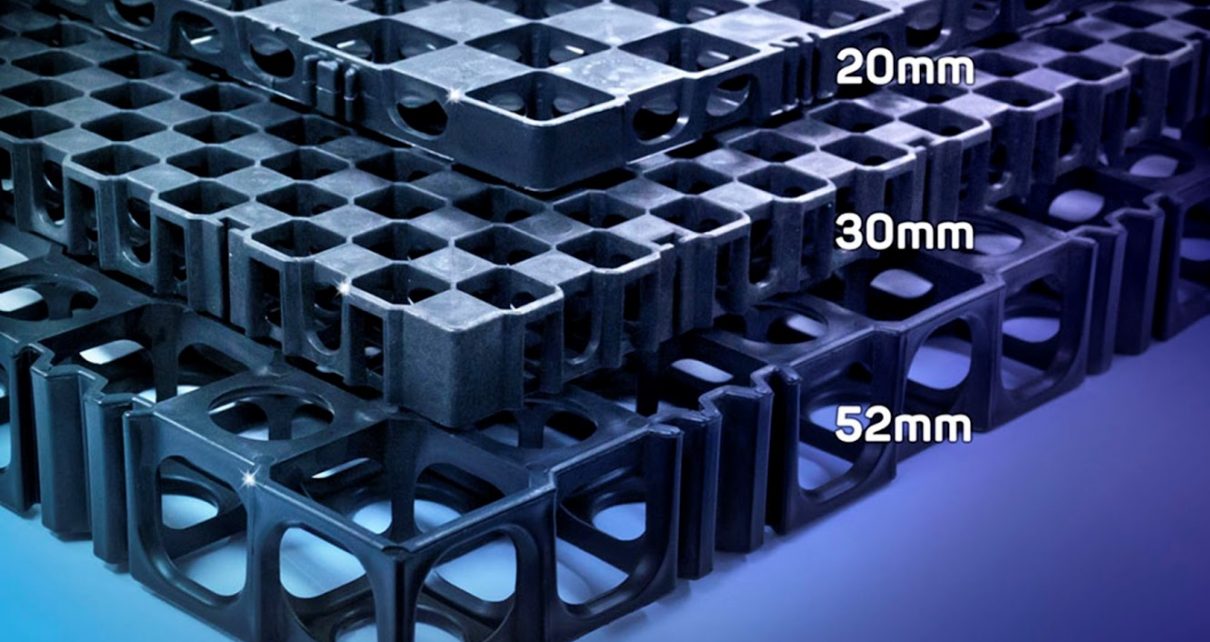Proper and efficient use of water is quickly becoming a fundamental element of any new project in Australia. This is especially the case in urbanisation projects that call for sustainable methods of drainage. One of the best ways to help achieve this is with an Atlantis Drainage Cell. These products can be distributed throughout Australia and they’re commonly used for water drainage solutions for a wide range of applications like roadways, driveways, retaining walls, basement waterproofing abutment drainage, roof gardens, sports fields, and saturated ground drainage among others. Their primary function is to allow the even flow of water through their structure while preventing the stagnation of water underneath the surface. You’ll quickly understand why they’re so important below. Due to its wide range of applications, performance, convenience, and cost-effectiveness, it is a product which is becoming popular by the day for smooth drainage and prevention of waterlogging.
What is a drainage cell?
Drainage cells are comprised of two main structural elements. The first is a backing plate that has a plurality of holes. There are also a series of cylindrical structures that have side walls and a base that extends from this backing layer. These two elements work together to allow fluid to pass through the holes into a generally tubular structure. It has a unique cup structure, that resembles a honeycomb, that is capable of trapping water for reuse or completely discharging it. This design allows for water to flow in a particular direction, towards a drain if required, to clear away excess.
How do drainage cells work?
They work by controlling the flow of surface water, like rain or stormwater, in a way that prevents the build-up of surface water adjacent to the foundations of buildings or other structures. They also have high compression strength and therefore won’t break easily if you use them on your deck or even on a sports field. They work very well in urban garden settings and are becoming increasingly popular in both to water responsible buildings because they assist in making them more environmentally friendly. Their usage in roof gardens is particularly beneficial because they discharge excess water from the roof to drainage outlets, all while hanging onto moisture that may be helpful in the growth of vegetation.
They have proven themselves to be excellent tools against leakage through roofs and other load issues due to the weight of water. The typical 20mm Atlantis Flo Cell product is formed from an extruded (or fondly known as “dimpled”) sheet of environmentally friendly plastic that is breathable, strong and highly durable. The dimpling is formed from an array of protruding frusto-conical holes or cups. In some cases, this plastic will have a layer of geotextile adhered to its base. This design aims to provide an improved drainage cell which addresses some of the problems of prior art drainage cells discussed above.
Installing a drainage cell
These drainage cells are very easy to install, and it doesn’t require heavy equipment or machinery to do so either. Installing drainage cells vertically will require the careful wrapping of the geotextile membrane. This is because they tend to form a fin drain which is exceptionally useful, thin, and very obtrusive with incredibly high water-flow capabilities. In cases of typical horizontal application, the steps are similarly easy. The cell is already manufactured for easy installation and integration. Each cell panel can be butted or clipped to one another in a swift, easy and firm joining mechanism.
They can also be shaped to the size you required and can be easily removed with something like pruning shears if required. A professional installer can also easily handle any slopes or vertical surfaces that need integration into the horizontal work. They can still be secured as appropriate to maintain cells in place. It may then be a requirement to place hydrophilic geotextile as specified by project design, whilst keeping to the manufacturer’s guidelines. To finish things off, they’ll then place porous cover material, or proper course backfill for flooring, pavement, etc., on top of the overlay geotextile. They’ll need to take care to avoid any punctures or dislodging of any of the cells.
Benefits of drainage cells
The main function of drainage cells is to necessitate the free water flow and avoidance of waterlogging. They also come with many other benefits for applications of all types. You can also rely on them to relieve hydrostatic pressure in retaining walls and grounds to ensure the longevity of the surrounding structures. They are also beneficial in that they can direct all of the excess water they manage to a storage tank for reuse in any way you see fit. Here are some of the environmental advantages of using drainage cells are:
- Minimise work in experts and equipment required for installation
- Reduce the costs involved for a system that channels water towards other networks
- A more efficient and easily installed sanitation network option
- Significantly lower risk of leaking, flooding, cracking or overflowing in drainage
- Exploring options for water reuse
- Enhanced garden areas upkeep and moisture retention
- Enabling the replenishing of natural water
- Cost savings derived from not having treated water
Rely on official distributors and qualified installers
You can benefit from everything mentioned above if you ensure that you are sourcing the right product and the right expertise to install it. Choose a distributor that can provide genuine Atlantis products and an installer that can put them to good use and you won’t regret it. Atlantic drainage cell products are designed to be long lasting and very long-lasting but that is if they’re used properly. They come with detailed manufacturer instructions and guidelines that can help you to enjoy this longevity, but it is also up to you to follow them. They only need minimal maintenance, and a professional can advise you about what you need in this regard. Even if they are highly affordable drainage solutions, they still need you to do the groundwork to ensure seamless installation and consistent upkeep.



